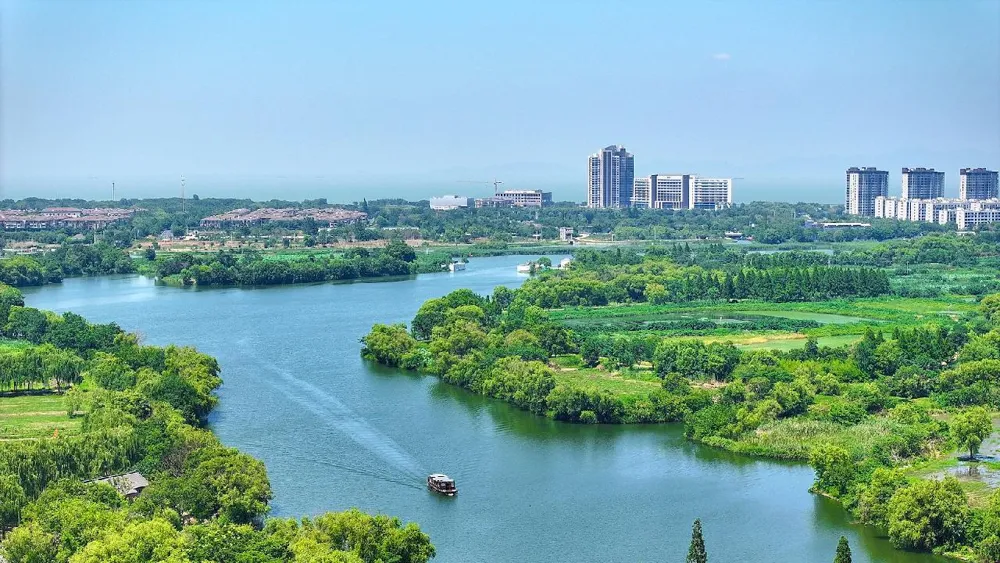China's Ambitious Plan for Zero-Waste Cities Development

China is taking significant strides towards sustainable urban living with the ambitious initiative to develop 'zero-waste cities.' This approach aims not only to enhance recycling efforts but also to minimize reliance on landfills, with 113 prefecture-level cities actively participating in this transformative effort.
The concept of a 'zero-waste city' in China is defined not as a place that produces no waste, but as an urban framework that focuses on reducing landfill usage. This is accomplished through the principles of green production, lifestyle changes, source-level waste reduction, and resource recovery, all aimed at minimizing solid-waste impacts.
China's commitment to this initiative is reflected in the 14th Five-Year Plan spanning from 2021 to 2025. Under this plan, 113 cities and eight special regions have been earmarked for zero-waste development, with more than 3,700 demonstration projects currently in various stages. The total investment in these projects has exceeded 1 trillion yuan, which is approximately 140 billion U.S. dollars.
These undertakings illustrate a robust nationwide determination to integrate zero-waste practices effectively into urban management and lifestyle.
A notable example of this innovative approach can be seen in North China's Xiong'an New Area, which is characterized by next-generation urban planning. Here, neighborhoods incorporate closed-loop systems known as 'waste cells.' The local infrastructure allows for the on-site processing of construction debris into new aggregate materials, while smart bins and digital incentives help residents sort their recyclables.
Additionally, district recycling hubs in Xiong'an are designed to convert scrap metals and plastics back into resources for manufacturing, thereby establishing a continuous resource stream that aligns urban development with environmental sustainability.
Chongqing has adopted a different strategy focusing on comprehensive system integration. The municipality has revamped its district-wide waste sorting infrastructure and developed standardized community resource-recovery centers. Organic waste is directed toward composting facilities located near urban farms, while residual waste generates power through modern waste-to-energy plants.
Furthermore, innovative repair-oriented businesses, such as repair cafés and upcycling workshops, aim to divert durable goods from landfills, demonstrating how a zero-waste philosophy can infiltrate everyday life and consumer behavior.
Shenzhen is pushing the boundaries of innovation within this framework, investigating novel concepts such as algae-based bioplastics derived from food scraps and robotic systems for dismantling electronic waste to recover rare metals. The city encourages startups and academic institutions to collaborate, fostering a culture of experimentation and adaptation.
As China transitions from pilot schemes to broader implementation, these pioneering cities provide valuable models for urban transformation. By embedding zero-waste principles into policy, planning, and community initiatives, China is paving the way toward a greener future, recognizing the potential of every discarded item as a resource.
(Cover image: Taihu Tuying Wetland Park in Changxing County, Zhejiang Province, East China, July 5, 2025.)
Read These Next

Rise of Life-like Robots: Beijing's New Robot Mall Launch
This article explores the launch of Robot Mall in Beijing, focusing on the sale of life-like robots and the broader implications for society and technology.

NASA, Google Create AI Medical Assistant for Astronauts
Discussion on NASA and Google's partnership to develop CMO-DA, an AI medical assistant for space missions, and its implications for healthcare in extreme environments and Earth.

Florida Verdict: Tesla Autopilot's Impact on Safety
This article explores the implications of a jury's verdict finding Tesla partially liable for a fatal crash involving its Autopilot technology. It delves into the functionality and limitations of self-driving systems and highlights the need for better consumer understanding and regulatory standards.
